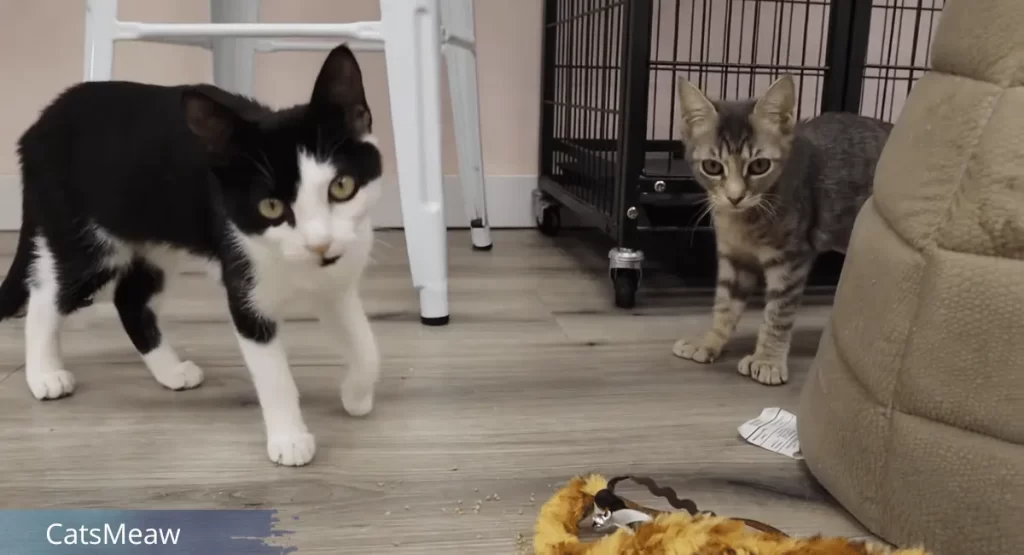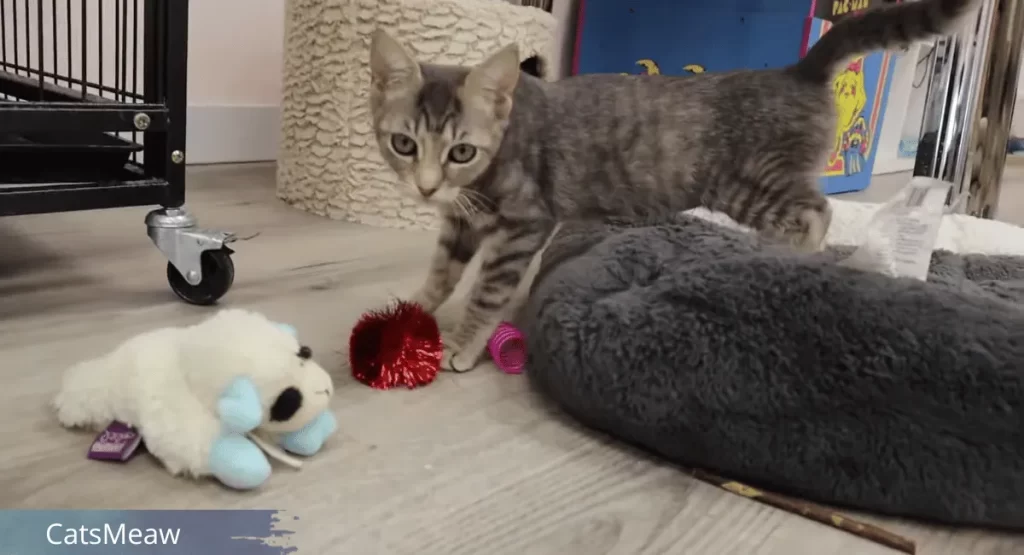Have you ever noticed your cat swaying or stumbling as they move? If so, they might be experiencing Wobbly Cat Syndrome. This condition, also known as cerebellar hypoplasia or cerebellar ataxia, affects a cat’s ability to maintain balance and coordinate movements. Understanding Wobbly Cat Syndrome is essential for providing the best care for your feline friend and ensuring they live a happy, fulfilling life despite their challenges.
In this article, we’ll explore what Wobbly Cat Syndrome is, its causes, symptoms, and the treatment options available to help your cat.

Table of Contents
What is Wobbly Cat Syndrome?
Wobbly Cat Syndrome refers to a collection of symptoms resulting from the impaired function of the cerebellum, the part of the brain responsible for motor control and balance. Cats with this syndrome may exhibit a distinct wobbling gait, unsteady movements, and difficulties with tasks that require coordination. This condition is not a single disease but a set of symptoms that can be caused by various factors.
The severity of cerebellar hypoplasia can range from mild, where the cat shows slight unsteadiness, to severe, where daily activities become challenging. Recognizing these symptoms early can make a significant difference in how effectively you can manage and support your cat.
Causes of Wobbly Cat Syndrome
Understanding the causes of this syndrome can help in managing and treating it effectively. Here are some common causes:
- Genetic Factors: Some cats inherit cerebellar hypoplasia due to genetic predispositions. Breeds such as the Manx are more prone to genetic conditions affecting their neurological development. This hereditary aspect can lead to a higher incidence of the syndrome in certain cat breeds.
- Environmental Influences: Environmental factors, such as exposure to toxins or infections during critical periods of development, can lead to Wobbly Cat Syndrome. For example, a viral infection contracted by a mother cat during pregnancy can affect the neurological development of her kittens, leading to symptoms of the syndrome.
- Underlying Health Conditions: Various health conditions can mimic or exacerbate the symptoms of Wobbly Cat Syndrome. Brain tumors, spinal cord injuries, and severe infections can lead to similar issues with balance and coordination. It’s important to differentiate these conditions from cerebellar hypoplasia to provide the appropriate treatment.
Symptoms of Wobbly Cat Syndrome
Identifying Wobbly Cat Syndrome involves observing several key symptoms:
Our pick: The Best Interactive Toys for Cats
- Physical Symptoms: The primary symptom is an unsteady gait or wobbling as the cat moves. They may struggle with jumping, climbing, or maintaining balance. Their movements may appear jerky or erratic, which is a direct result of cerebellar dysfunction.
- Behavioral Changes: Cats with Wobbly Syndrome might exhibit behavioral changes due to their physical limitations. They may become more cautious, avoid activities that require balance, or show signs of frustration as they struggle with their movements.
- How to Recognize the Syndrome: Pay close attention to any signs of unsteadiness or difficulty with coordination in your cat. Early recognition is crucial for managing the condition and ensuring your cat receives the necessary support.
Diagnosis and Veterinary Care
Proper diagnosis is essential for managing Wobbly Cat Syndrome effectively:
- Diagnostic Procedures: A veterinarian will conduct a thorough examination to diagnose cerebellar hypoplasia. This may include blood tests, imaging studies (like X-rays or MRIs), and neurological evaluations to rule out other conditions and confirm the presence of the syndrome.
- Importance of Early Detection: Early diagnosis can significantly impact the management and quality of life for cats with Wobbly Cat Syndrome. The sooner the condition is identified, the more options you have for treatment and supportive care.

Treatment Options for Wobbly Cat Syndrome
While there is no cure for Wobbly Cat Syndrome, several treatment options can help manage the symptoms and improve your cat’s quality of life:
- Medical Treatments: Depending on the underlying cause, your vet may prescribe medications to address specific symptoms or related health conditions. While these treatments may not cure the syndrome, they can help manage symptoms and improve comfort.
- Lifestyle Adjustments: Modifying your cat’s environment can greatly assist in their daily life. Providing ramps, low steps, and non-slip surfaces can help them navigate their surroundings more easily and reduce the risk of accidents.
- Home Care Tips: Engaging your cat in regular exercise and mental stimulation is important. Interactive toys and gentle play can help maintain their physical and mental well-being, even with the challenges posed by cerebellar hypoplasia.
Conclusion
Wobbly Cat Syndrome presents a unique set of challenges for both cats and their owners. By understanding the causes, recognizing the symptoms, and exploring the available treatment options, you can better manage this condition and enhance your cat’s quality of life. Early detection and proactive care are key to providing the best support for your feline friend. With the right approach, many cats with this problem can live happy and fulfilling lives.
Related: Ataxia in Cats: Best treatment for your Feline
FAQs
- Can Wobbly Cat Syndrome be cured?
- There is no cure for cerebellar hypoplasia. However, with appropriate management and care, many cats can live comfortably with the condition.
- Is Wobbly Cat Syndrome hereditary?
- Yes, cerebellar hypoplasia can be hereditary, particularly in certain breeds like the Manx.
- How can I help my cat with Wobbly Cat Syndrome at home?
- Adjust your cat’s environment to include non-slip surfaces, ramps, and easy access to essentials. Regular exercise and interactive toys can also help.
- What should I do if I suspect my cat has cerebellar hypoplasia?
- Consult with a veterinarian for a thorough evaluation and diagnosis. They can provide guidance on managing the condition and supporting your cat.
- Are there any specific diets recommended for cats with Wobbly Cat Syndrome?
- While there is no specific diet for Wobbly Cat Syndrome, maintaining a balanced diet that supports overall health is important. Consult with your vet for dietary recommendations.
